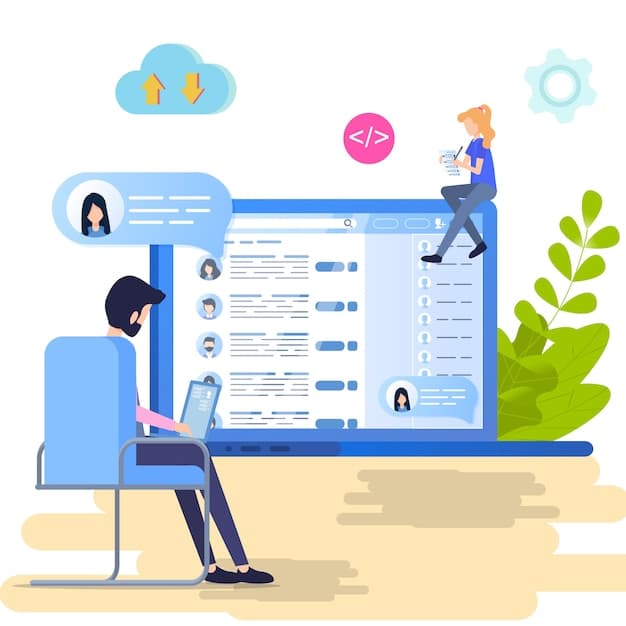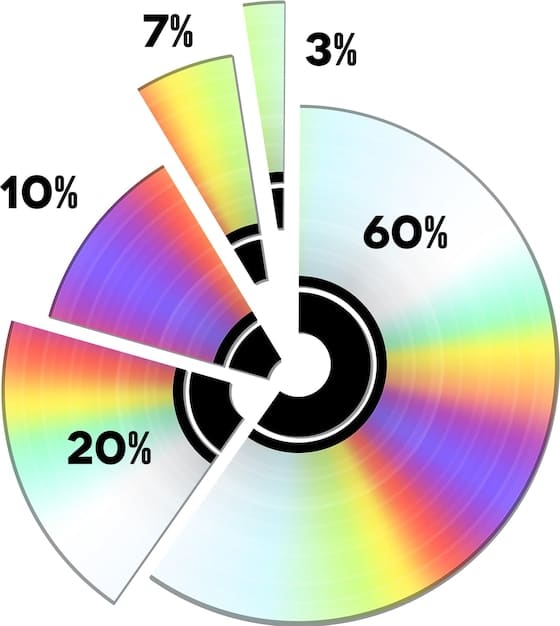Is Your Resume Ready for 2025? Top Mistakes to Avoid

Is Your Resume Ready for 2025? Avoid These 5 Common Mistakes That Cost You Interviews and ensure your resume stands out. Learn to tailor your resume, quantify achievements, and highlight relevant skills to land more interviews.
Are you preparing to take the next step in your career? As we approach 2025, the job market continues to evolve, and so should your resume. Far too often, job seekers miss opportunities simply because of preventable errors on their resumes. Is Your Resume Ready for 2025? Avoid These 5 Common Mistakes That Cost You Interviews by knowing the common pitfalls.
In this article, we’ll explore critical adjustments you can make to ensure your resume reflects your best self and grabs the attention of recruiters. Let’s dive in and future-proof your job search!
Why You Need to Update Your Resume for 2025
The job market isn’t static; it’s a dynamic environment influenced by technological advancements, evolving industry demands, and changing employer expectations. A resume that worked in 2020 may not cut it in 2025. Is Your Resume Ready for 2025? Avoid These 5 Common Mistakes That Cost You Interviews by staying current with the latest trends.
Recruiters use Applicant Tracking Systems (ATS) to filter candidates, and these systems become more sophisticated each year. Your resume must be optimized to pass through these filters while still appealing to human eyes. Updating your resume ensures you’re using the right keywords, formatting, and content to stay competitive.

ATS Optimization
One of the biggest changes in recent years is the rise of ATS. Understanding how these systems work is crucial for optimizing your resume.
- Keywords: Use industry-specific keywords found in job descriptions.
- Formatting: Stick to standard fonts and avoid complex layouts that ATS can’t read.
- File Type: Submit your resume as a .docx or .pdf unless otherwise specified.
Evolving Industry Demands
Industries evolve, and the skills employers seek change with them.
- Emerging Skills: Incorporate new skills like AI literacy, data analysis, and cloud computing if relevant.
- Industry Trends: Stay informed about the latest developments in your field and highlight related experience.
- Certifications: Obtain relevant certifications to demonstrate your commitment to professional development.
By understanding the importance of keeping your resume updated, you’re already one step closer to securing more interviews. Ensure you’re not overlooked due to outdated information or irrelevant skills. Staying current is the key to staying competitive.
Mistake #1: Generic Resumes That Lack Tailoring
One of the most common mistakes is submitting a generic resume that lacks tailoring for the specific job. Recruiters can spot a generic resume from a mile away. Is Your Resume Ready for 2025? Avoid These 5 Common Mistakes That Cost You Interviews by customizing your resume for each application.
Tailoring involves adjusting your resume to match the specific requirements and keywords listed in the job description. It demonstrates that you’ve taken the time to understand the role and how your skills align with the employer’s needs. This is an essential step in showcasing your unique value proposition.
Why Tailoring Matters
Here’s why tailoring your resume is crucial for landing interviews:
- Relevance: Highlights the skills and experiences most relevant to the job.
- Engagement: Shows you understand the company’s needs and culture.
- ATS Compliance: Incorporates keywords that help your resume pass through ATS filters.
How to Tailor Your Resume Effectively
Tailoring your resume is an art that requires careful attention to detail.
- Analyze Job Descriptions: Identify key skills, responsibilities, and requirements.
- Match Keywords: Incorporate keywords naturally throughout your resume.
- Highlight Relevant Experience: Emphasize experiences that align with the job requirements.
By tailoring your resume, you significantly increase your chances of catching the recruiter’s eye and demonstrating your suitability for the role. This personalized approach sets you apart from other candidates and shows your genuine interest in the position.
Mistake #2: Failing to Quantify Your Achievements
Another critical mistake is failing to quantify your achievements. Many candidates list responsibilities without providing concrete evidence of their impact. Is Your Resume Ready for 2025? Avoid These 5 Common Mistakes That Cost You Interviews by using numbers and metrics to showcase your accomplishments.
Quantifying your achievements involves using numbers, percentages, and other metrics to demonstrate the tangible results you’ve achieved in your previous roles. This approach transforms your resume from a list of generic statements into a compelling narrative of your professional success.
The Power of Numbers
Here’s why quantifying your achievements is essential:
- Tangible Evidence: Provides concrete proof of your skills and abilities.
- Credibility: Adds weight to your accomplishments and builds trust with recruiters.
- Differentiation: Sets you apart from other candidates who only list responsibilities.
Examples of Quantifiable Achievements
Let’s explore some examples of how to quantify your achievements effectively:
- Sales: “Increased sales by 30% in one year.”
- Marketing: “Generated 500 qualified leads through social media campaigns.”
- Project Management: “Delivered project 2 weeks ahead of schedule and 10% under budget.”
By quantifying your achievements, you provide recruiters with a clear understanding of the value you bring to the table. This data-driven approach highlights your impact and makes your resume more compelling and memorable.

Mistake #3: Irrelevant Information Overload
Including irrelevant information is a common mistake that can clutter your resume and distract recruiters from your key qualifications. Is Your Resume Ready for 2025? Avoid These 5 Common Mistakes That Cost You Interviews by focusing on information that directly relates to the job you’re applying for.
Irrelevant information can include outdated job experiences, unrelated skills, or personal details that don’t contribute to your professional narrative. This not only wastes valuable space but also dilutes the impact of your most relevant qualifications. Keep your resume concise and focused.
What to Exclude
Here are some examples of information that should typically be excluded from your resume:
- Old Job Experiences: Jobs from over 10 years ago that are not relevant to your current career path.
- Unrelated Skills: Skills that don’t align with the job requirements.
- Personal Details: Information like marital status, religion, or hobbies (unless relevant to the job).
Prioritizing Relevance
Focus on showcasing your most recent and relevant experiences. To keep your resume laser-focused:
- Highlight Key Skills: Emphasize skills that match the job description.
- Showcase Accomplishments: Quantify achievements that demonstrate your impact.
- Use Targeted Keywords: Incorporate industry-specific keywords.
By eliminating irrelevant information, you create a streamlined and impactful resume that highlights your most valuable qualifications. This focused approach captures the recruiter’s attention and increases your chances of securing an interview.
Mistake #4: Ignoring Visual Appeal and Readability
In today’s digital age, visual appeal and readability are crucial for making a positive impression with your resume. A poorly formatted resume can be difficult to read and may even be rejected by ATS. Is Your Resume Ready for 2025? Avoid These 5 Common Mistakes That Cost You Interviews by ensuring your resume is visually appealing and easy to navigate.
Visual appeal involves using a clean and professional design with appropriate fonts, spacing, and layout. Readability, on the other hand, focuses on making the content easy to understand and digest. A well-designed resume not only looks good but also communicates your qualifications effectively.
Elements of Visual Appeal
Here’s how to enhance the visual appeal of your resume:
- Clean Design: Use a modern and professional layout.
- Appropriate Fonts: Choose easy-to-read fonts like Arial, Calibri, or Times New Roman.
- White Space: Use white space to create visual breaks and enhance readability.
Enhancing Readability
To improve the readability of your resume, consider the following tips:
- Clear Section Headings: Use clear and concise headings for each section.
- Bullet Points: Use bullet points to highlight key accomplishments.
- Concise Language: Use clear and concise language to convey your message.
By paying attention to visual appeal and readability, you create a resume that is both engaging and informative. This not only captures the recruiter’s attention but also ensures your qualifications are easily understood and appreciated.
Mistake #5: Neglecting to Proofread for Errors
Typos and grammatical errors can severely damage your credibility and make you appear unprofessional. Neglecting to proofread your resume is a critical mistake that can cost you interviews. Is Your Resume Ready for 2025? Avoid These 5 Common Mistakes That Cost You Interviews by carefully reviewing your resume for errors before submitting it.
Proofreading involves carefully checking your resume for spelling errors, grammatical mistakes, and formatting inconsistencies. Even minor errors can create a negative impression and suggest a lack of attention to detail. A polished and error-free resume demonstrates your professionalism and commitment to quality.
The Importance of Proofreading
Here’s why proofreading is essential for your resume:
- Credibility: Shows attention to detail and professionalism.
- First Impression: Ensures you make a positive first impression.
- Clear Communication: Avoids confusion and misinterpretation.
Tips for Effective Proofreading
To proofread your resume effectively, consider the following tips:
- Read Aloud: Read your resume aloud to catch errors you might miss when reading silently.
- Use Spell Check: Utilize spell check and grammar tools to identify potential errors.
- Ask for Feedback: Have a friend, family member, or career counselor review your resume.
By taking the time to proofread your resume thoroughly, you ensure that it is error-free and reflects your best self. This attention to detail demonstrates your professionalism and increases your chances of making a positive impression on recruiters.
| Key Point | Brief Description |
|---|---|
| 🎯 Tailor Your Resume | Customize your resume for each job application to highlight relevant skills. |
| 📈 Quantify Achievements | Use numbers and metrics to demonstrate the impact of your work. |
| ✂️ Remove Irrelevant Info | Focus on recent and relevant experiences to keep your resume concise. |
| 👀 Proofread Carefully | Check for typos and grammatical errors to maintain a professional image. |
Frequently Asked Questions
Review the job postings for positions you desire and see if your resume aligns with the skills, experience, and keywords they list. If it doesn’t, it’s time for an update!
Consider designs that are clean, visually appealing, and easy to read. Use clear headings, bullet points, and appropriate spacing to enhance readability. Templates available on Canva or Microsoft Word can be a great starting point.
It’s a good practice to update your resume at least every six months, or whenever you gain new skills, experiences, or certifications. Regular updates keep your resume fresh and relevant. Is Your Resume Ready for 2025? Avoid These 5 Common Mistakes That Cost You Interviews and keeping it updated is key.
Unless specified otherwise, submitting your resume as a PDF (.pdf) file is generally recommended. PDF preserves the formatting and ensures it looks the same on any device or operating system. Some older ATS systems may work only with doc or docx, so check the job posting instructions.
Yes, including a concise professional summary statement or objective can be beneficial. It provides a brief overview of your skills, experience, and career goals, and highlights why you’re a good fit. Is Your Resume Ready for 2025? Avoid These 5 Common Mistakes That Cost You Interviews and a summary helps address that.
Conclusion
In conclusion, ensuring your resume is ready for 2025 involves avoiding common mistakes and adopting best practices. By tailoring your resume, quantifying your achievements, removing irrelevant information, enhancing visual appeal, and proofreading for errors, you can significantly increase your chances of landing interviews and advancing your career. Is Your Resume Ready for 2025? Avoid These 5 Common Mistakes That Cost You Interviews by taking simple steps now.
As you prepare for the job market of tomorrow, remember that a well-crafted resume is your first step towards reaching your career goals. So, take the time to refine and optimize your resume, and get ready to make a lasting impression on recruiters and employers.





